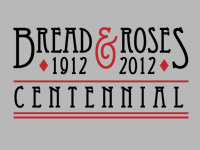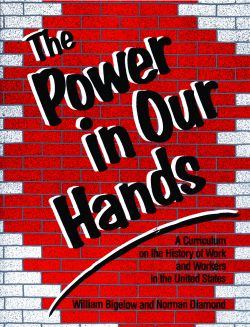by Bill Bigelow
One of the great silences in the mainstream school curriculum is the role that social movements have played in making this a fairer, more peaceful, more democratic world. If you think things are bad today, imagine what they would be like without the movements to abolish slavery, to demand women’s rights, to end unjust wars, to fight for civil rights, to defend the environment—or for workers to bargain collectively for a living wage and workplace dignity.
 One of the most significant struggles for workers’ rights began exactly one hundred years ago, on January 12th in Lawrence, Mass., when thousands of textile workers began a walkout that would come to be known as the Bread and Roses Strike, as well as the Singing Strike.
One of the most significant struggles for workers’ rights began exactly one hundred years ago, on January 12th in Lawrence, Mass., when thousands of textile workers began a walkout that would come to be known as the Bread and Roses Strike, as well as the Singing Strike.
You’re unlikely to find much more than a mention of this important strike in a typical high school history textbook, if that. But as Norm Diamond points out in his article for the Zinn Education Project, “One Hundred Years After the Singing Strike,” this was a remarkable struggle that united mostly young women workers speaking dozens of languages in a dead-of-winter contest with some of the richest men in the United States. And the workers won.
The Zinn Education Project includes a number of teaching materials about the strike:
 The role play that Norm and I wrote, “Lawrence, 1912: The Singing Strike,” which is excerpted from our book The Power in Our Hands: A Curriculum on the History of Work and Workers in the United States.
The role play that Norm and I wrote, “Lawrence, 1912: The Singing Strike,” which is excerpted from our book The Power in Our Hands: A Curriculum on the History of Work and Workers in the United States.- The piece I wrote originally for Rethinking Schools “The Singing Strike and the Rebel Students: Learning from the Industrial Workers of the World,” which describes the activism of Linda Christensen’s and my students in Portland immediately following students’ participation in the “Lawrence, 1912” role play.
- Bread and Roses, Too is Katherine Paterson’s young adult novel about the 1912 strike, which many teachers have used.
The Zinn Education Project promotes and supports the use of Howard Zinn’s best-selling book A People’s History of the United States and other materials for teaching a people’s history in middle and high school classrooms across the country. The website offers more than 100 free, downloadable lessons and articles organized by theme, time period, and reading level. The Zinn Education Project is coordinated by Rethinking Schools and Teaching for Change.
